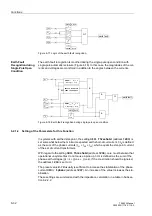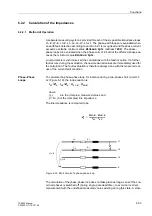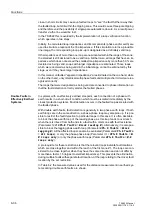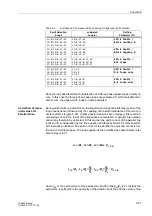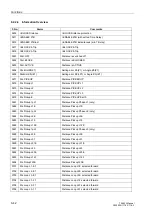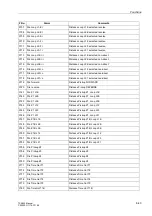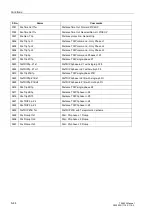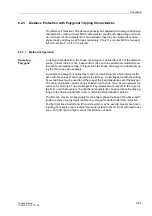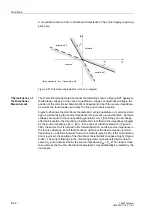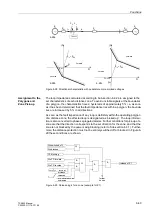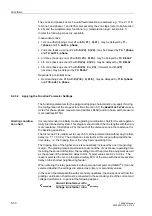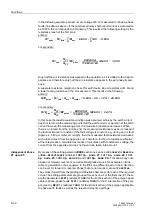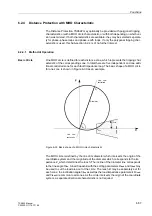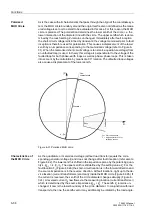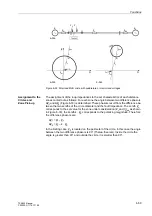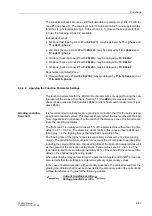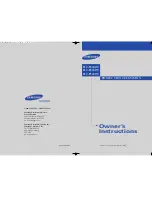
Functions
6-46
7SA522 Manual
C53000-G1176-C119-2
Figure 6-25 Polygonal characteristic
Direction
Determination
For each loop an impedance vector is also used to determine the direction of the short-
circuit. Usually similar to the distance calculation, Z
L
is used. However, depending on
the “quality” of the measured values, different computation techniques are used. Im-
mediately after fault inception, the short circuit voltage is disturbed by transients. The
voltage memorized prior to fault inception is therefore used in this situation. If the
steady-state short-circuit voltage (during a close-in fault) is even too small for direction
determination, an unfaulted voltage is used. This voltage is in theory quadrilateral to
the actual short-circuit voltage for both phase–earth loops as well as for phase–phase
loops (refer to Figure 6-26). This is taken into account when computing the direction
vector by means of a 90°–rotation. In Table 6-3 the allocation of the measured values
to the six fault loops for the determination of the fault direction is shown.
X
R
Line
characteristic
Load area
Load area
X
1,05*X
R
1,05*R
RLoad
1,05*RLoad
ϕ
Line
α
Um 5 % vergrößertes Polygon, wenn im letzten Meßzyklus eine
sichere Anregung vorlag
Setting values
Line
characteristic
ϕ
Load
directional
characteristic
Reset values
only for zone Z1
Summary of Contents for siprotec 7SA522
Page 20: ...7SA522 Manual C53000 G1176 C119 2 ...
Page 64: ...7SA522 Manual C53000 G1176 C119 2 ...
Page 89: ...SIPROTEC 4 Devices 4 25 7SA522 Manual C53000 G1176 C119 2 Figure 4 20 CFC Logic example ...
Page 408: ...7SA522 Manual C53000 G1176 C119 2 ...
Page 456: ...7SA522 Manual C53000 G1176 C119 2 ...
Page 516: ...7SA522 Manual C53000 G1176 C119 2 ...
Page 620: ...Appendix B 48 ...

